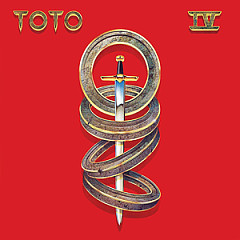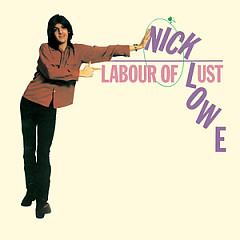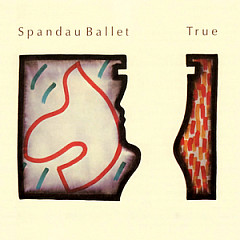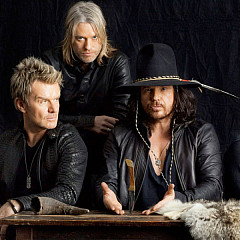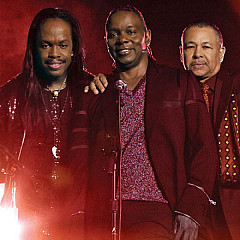Before Milli Vanilli got to it, "Girl You Know It's True" was a European dance hit from the Maryland-based band The Numarx. Released in 1987 as a 12" single running 7:27, it was popular in German dance clubs, which is probably where Milli mastermind Frank Farian heard the song. The Numarx version is slower with more spacing between the elements, but it's clearly the same song. The original version puts more focus on the story, which is a guy coming to the realization that the girl he's seeing is the one he wants to be with. It includes a bit of opening dialogue:
Guy: "You mean a lot to me."
Girl: "I really mean that much to you?"
Guy: "Girl, you know it's true."
The Numarx were made up of Bill Pettaway Jr., Sean Spencer (DJ Spen), Kevin Lyles, Rodney Hollaman and along with their producer Ky Adeyemo, they all got writing credits on the Milli Vanilli hit. Numarx had some local success with dance-rap/electronica tracks in the '80s - their best known song is probably "Rhymes So Def." In a 1997 Vibe magazine story, Pettaway is credited with discovering Toni Braxton when he heard her singing at a gas station in 1990 and then introduced her to people at Arista Records.
The German producer Frank Farian created this song using the Numarx track as a guide. He used American singers, since he wanted guys with a feel for the Hip-Hop sound that was becoming so popular in the States. He found three guys who had served on the American Army base in Germany: singers John Davis and Brad Howell and rapper Charles Shaw, and these are the guys who actually perform on the track. Shaw was the one who first spilled the beans about Rob Pilatus and Fabrice Morvan (the faces of the group) not being the voices on the record.
The Numarx track was based on a popular beat that originated on a 1974 song by The Soul Searchers called "Ashley's Roachclip." In 1987 Eric B. & Rakim used it on "
Paid In Full" and over the next few years it showed up in a bunch of pop songs, including "
Set Adrift On Memory Bliss" by P.M. Dawn.
Rob Pilatus and Fabrice Morvan were aspiring entertainers who showed up at Frank Farian's office looking for work at the same time he was looking for guys to front Milli Vanilli. The real singers were various combinations of too old, too ugly, or not willing to tour, so Farian decided that Pilatus and Morvan would represent the group, and he created an image for them, dressing them in wigs and biker shorts. The ruse worked a little too well, as Rob and Fab gave the song an intriguing visual element and a video that was so popular on MTV that the network invited them on their Club MTV tour along with Paula Abdul and Tone Loc.
The "Girl You Know It's True" single sold over 7 million copies, and that kind of money is hard to keep quiet. On the July 21, 1989 stop in Bristol, Connecticut on the Club MTV tour, their backing track malfunctioned, proving that they were lip-synching at live events. This was followed by Charles Shaw, who is the real rapper on this song, going public and revealing that Rob and Fab did not sing on the album. Shaw first talked to the German press, then did an interview with New York Newsday that blew up the story. He claimed he was paid just $6,000 for his rap, and thought he should be paid more for the hit. Shaw stopped talking after reaching a settlement with the producer, which Farian claims was for $155,000.
-
Farian fired his frontmen in November 1990, and they responded by holding a press conference where they played a tape of their singing and brought out out a vocal coach to tell reporters that they really were pretty good singers. At one point, they even sang a snippet of this song at the request of the attending press. They told their story to the Los Angeles Times, where they explained that they were victims of manipulation, and thought they were going to sing when they signed the contract with Farian - not surprising that they missed this detail since the contract was in German, a language they didn't understand. Morvan said "It was like we were trapped in some golden prison."
Like the Monkees many years earlier, Morvan and Pilatus pushed to sing for real on their second album, and Farian planned to when the story broke. Farian, who owns the group name, released the second album, which was originally titled Keep on Running, as The Real Milli Vanilli in 1991. It featured Brad Howell and John Davis from the first album, but without the visual support from Rob and Fab, it tanked.
Pilatus and Morvan released their own album called Rob & Fab, and performed on The Arsenio Hall Show, but their album was also a flop and they were never able to regain their celebrity. The duo spilt up, and Morvan found minor success as a solo act, sometimes performing the Milli Vanilli hits in his own voice. Pilatus died in 1998 after overdosing on a combination of drugs and alcohol. He was 32.
Frank Farian was the architect of the popular dance outfit Boney M, who had several hits in Europe with "singers" selected for their visual appeal performing in front of tracks laced by Farian. On many Boney M songs, Farian sang some of the parts that were then mimed by the singers in live performances - this is particularly evident on their song "
Daddy Cool."
This lack of authenticity in the world of dance/pop music was not a problem in Europe, and Americans were fine with manufactured groups like The Monkees, The Archies and The Strangeloves (a group of American producers who claimed to be Australian shepherds). Milli Vanilli was different because their act was believable and they became so incredibly popular. It provided fodder for the news media and fueled a debate about what was real in music, and if it even mattered. Suddenly, the age-old practice of lip-synching was on the hot seat with Milli Vanilli personifying the practice. Farian was surprised this was such a big deal. He told
The L.A. Times: "I thought, OK, it's just for discotheques and clubs. I never thought it would be a great hit, not #1, not Top 10 in America. And then it was too late and I was too embarrassed to say anything. We sell illusions and they are not reality. That's a good lesson for every kid to learn."
Milli Vanilli won the Best New Artist Grammy in 1990. An award Rob and Fab had to give back when it was revealed they didn't actually sing.
This was the first single from the album, but it was not the biggest hit. "Baby Don't Forget My Number," "Blame It On the Rain," and "Girl I'm Gonna Miss You" all hit #1 in the United States.
One guy who emerged unscathed in this whole affair was Clive Davis, who was head of Arista Records. It's highly unlikely that Davis didn't know that Milli Vanilli was a sham, but he still let them get up and accept their Grammy award, resulting in the biggest embarrassment in the history of the National Academy of Recording Arts and Sciences - even worse than giving Jethro Tull the Best Hard Rock/Metal Performance award in 1989. The NARAS responded not by blackballing Davis and Arista, but by teaming up with Davis to host an annual pre-Grammy gala, and lavishing his artists with awards, always with Davis on display. His biggest Grammy years were with Santana's Supernatural album in 2000 and with Alicia Keys' Songs in A Minor in 2002. Whether or not Davis knew about the faux-singing in 1990 was a point of contention, with Pilatus and Morvan insisting he knew at least 6 months before the awards, and Arista's executive vice president insisting they had no idea, saying, "We are merely a distributor of their records."
In Germany, this hit #1 and spent 20 weeks in the Top 20.
As this song was climbing the charts, two other German music producers were putting together Snap!, which was a similar concept, but with a prominent female vocalist. They also found their rapper (Turbo B.) from the American Army base in Germany, and replaced their female vocalist
Penny Ford with another singer for the video for their first single, "
The Power." As the Milli Vanilli scandal was emerging, "The Power" was climbing the charts. They had to track down Penny Ford and make sure she was both the face and voice of Snap! to avoid similar problems.
At the end of 1990, there was a short-lived cartoon series called Super Mario 3, which was based on the video game. In one episode, an animated Milli Vanilli perform this song to a wildly enthusiastic crowd. What's weird is that even their cartoon versions were obviously lip-synching.

